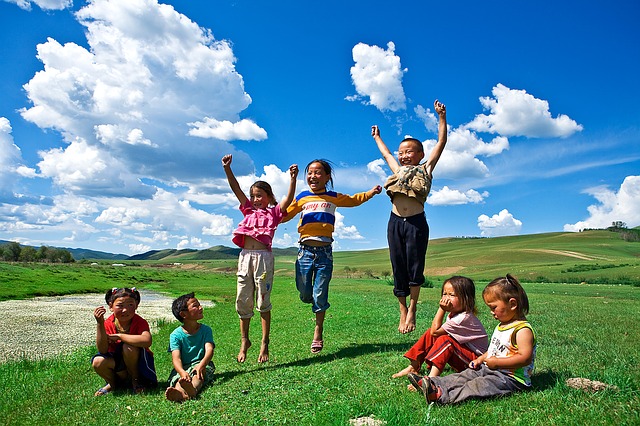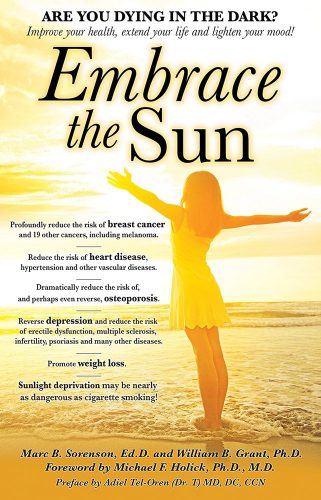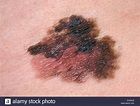Protect the children with sunshine. By Marc Sorenson, EdD.

Protect the children against illness? That is a great idea, and sunshine is one of the most effective “protectors” we can use.
“Children and arthritis” is not something we hear about because arthritis is thought to be an adult’s disease. Yet tragically, an estimated 294,000 children under age 18 have some form of arthritis or rheumatic condition. And this represents approximately 1 in every 250 children in the US.[1] Thus, we must be concerned and promote actions that protect the children.
Do we need to be even more concerned to protect the children in northern climes?
Also, the numbers of children with arthritis increase dramatically In Canada and the Northern U.S. This could be as a result of either vitamin D deficiency or sunlight deficiency or both. Since 90% of vitamin D blood levels are due to sunlight, it is likely that sun deprivation is the cause. So, if our desire is to protect the children, we must insist that they receive plenty of non-burning sun exposure. And in the winter, a vitamin-D producing sunlamp should be the first choice. When we use lamps to produce vitamin D, we also protect the children with other critically important photoproducts. Some of these photoproducts are endorphins, serotonin, nitric oxide brain-derived neurotropic factor (BDNF), dopamine and endorphin. And all of these photoproducts are necessary for health. So, to help the children, we should be sure that they have ample sunshine or light for the aforementioned sun lamps.
Articles from the UK and scientific journals help us to protect the children.
An article from the Express, a UK online newspaper, describes research published in the scientific journal, Annals of the Rheumatic Diseases. They state, “Millions of people could protect themselves from crippling arthritis by getting a regular dose of sunshine.” And although the research involved women, we can easily extrapolate to children, since mothers to a great extent, determine their children’s habits.
To learn more about arthritis and the influence of sun exposure, read this article (and others) posted on Sunlight Institute. First of all, go to the news section and search “arthritis.” You will find numerous articles on the subject. Also, read the book, Embrace the Sun.

Remember to obtain regular sun exposure to protect yourself
and to protect the children. Happy sunning!
[1] Centers for Disease Control and Prevention: arthritis-related statistics.
Saving the children by Marc Sorenson, EdD.

Saving the children is a multi-part discussion that emphasizes the critical need for sun exposure in children because of sun deprivation. In the last blog on the subject, we first of all talked about saving the children from myopia (nearsightedness). And this blog will discuss several additional aspects of childhood health that are positively related to sunlight.
Why are we depriving our children of sunlight? Because $ are involved. So, we must not fail to be about the business of saving the children from the Powers of Darkness.
Saving the children from melanoma. With sunlight!

First of all, much noise is made about removing children from sun exposure to protect them from future melanoma. Consequently, we “protect” them from sunlight by keeping them indoors and dutifully slathering them with sunscreen. Furthermore, our children are taught to fear the sun. That is strange, since research shows that children who engage in outdoor activities are less likely to develop melanoma. In that research, outdoor exercise such as soccer and gardening were mentioned as the most noteworthy activities to protect against melanoma.
Saving the children from asthma. With sunlight!
Asthma, an inflammation of the air passages, has become a scourge of both children and adults. And according to the Asthma and Allergy Foundation, each day 40,000 people miss school or work due to asthma. In addition, 30,000 people have an attack daily, and 5,000 people visit the emergency room.[1] Especially relevant is the fact that the disease is increasing most rapidly among black children. Dark skins need more sunshine to produce vitamin D, which may make these children more susceptible. So what does the research say about sunshine and asthma in children? The most important study was probably one from Spain. It showed that children exposed to the most sunlight had much lower risks of asthma than those who were least-exposed. Thus, each with each hour of added sun exposure per day predicted a decreased risk of the disease.[2]
Saving the children from HIV infection (AIDS)
AIDS is a fearful disease, and it is most noteworthy that the children, the most vulnerable among us are victims. Saving the children from AIDS should be a priority, no?
Sunlight exposure leads to the production of vitamin D, and vitamin D may have a profound influence on the development of AIDS. Thus, HIV-positive pregnant women with lowest vitamin D levels had 50% greater risk of transmission of HIV to their children. Also, there was a two-fold increase of HIV transmission by breast feeding. In addition, there was also a 61% increased death risk among children born to women with low Vitamin D levels.[3] Therefore, sunlight is key to saving the children from this horrible disease.
In conclusion, melanoma, asthma and
AIDS are diseases our children should never need to suffer. Furthermore, regular,
non-burning sun exposure should be a part of the daily lives of children
whenever possible.
Learn more my visiting http://sunlightinstitute.org/ And read
the new book, Embrace
the Sun.
[1] Asthma and Allergy Foundation of America: Asthma Facts and Figures. http://www.aafa.org/display.cfm?id=8&sub=42
[2] Arnedo-Pena A, et al. Sunny hours and variations in the prevalence of asthma in schoolchildren according to the International Study of Asthma and Allergies (ISAAC) Phase III in Spain. Int J Biometeorol 2011;55:423-434.
[3] Mehta S, Hunter DJ, Mugusi FM, Spiegelman D, Manji KP, Giovannucci EL, Hertzmark E, Msamanga GI, Fawzi WW: Perinatal Outcomes, Including Mother-to-Child Transmission of HIV, and Child Mortality and Their Association with Maternal Vitamin D Status in Tanzania. J Infect Dis 2009;200:1022-30.
A major research paper report in the medical journal, Pediatrics, has shown an alarming increase in vitamin D deficiency among children aged 0-17 years of age. https://www.ncbi.nlm.nih.gov/pubmed/28159871 [1] The researchers use the word “exponential,” and indeed it is, increasing from 3.14 deficient children per 100,000 in the year 2000 to 261 per 100,000 in 2014. We can state that as an 83-times increased risk of vitamin D deficiency, or an 8,300% increase. Either way one states it, it is an alarming increase, and will lead to an overwhelming number of bone diseases and other maladies in the future.
Why would such an increase take place?
That is an easy question to answer. Parents are “protecting” their children from sun exposure by keeping them away from direct sunlight—either by neglecting to take them outside (or demanding they stay indoors)—or slathering them with sunscreens, which can reduce the skin’s production of vitamin D by as much as 99%.[2] In the 1930s, when the medical community had not yet bought into today’s sun phobia, the Department of Labor printed a pamphlet called Sun for Babies in which they made this statement: “Every mother who wishes her baby to have robust health should give him regular sun baths from early infancy until he is old enough to play in the sun himself. If the sun’s rays are to help the baby grow properly and to prevent rickets, they must fall directly on the skin and tan it.” That would not be popular advice today, and it is likely any parent practicing “baby tanning” would be arrested for child abuse. Since the 1930’s the dermatological profession has come a long way… in the wrong direction. This is not to say that all dermatologists are sending the wrong messages. In my new book, Embrace the Sun (scheduled for publication shortly), I draw from the research from several “enlightened” dermatologists who have given stern warnings to their colleagues who are spreading their destructive, anti-sun messages. In fact, the person who is writing the foreword is a dermatologist, and one of the top sunlight/vitamin D scientists in the world.
Another chilling result of robbing our children of sunlight is the dramatic increase in myopia. There are several studies proving this point, but I will mention only one here: This research showed the prevalence of myopia among Chinese children living in Singapore was 29.1%, whereas Chinese children living in Sydney, Australia, had a prevalence rate of only 3.3%. The children in Sydney spent about 13.8 hours per week outdoors compared to 3.05 hours in Singapore. In other words, the children who spent most of their lives indoors, had 9.5 times the risk of developing myopia![3] In addition, rickets is now making a comeback. After a century of knowing how to prevent this disastrous children’s disease, it is returning, and cases of rickets are reported as far south as Texas, Georgia and North Carolina.[4] If children are not allowed to play outside, their vitamin D levels will be no better than if they lived at the North Pole.
But what about future risk of melanoma? Melanoma risk has increased by 3000% since 1935 while outdoor activity has decreased by about 90%.[5] The advice to halt the increase in melanoma, which is given by the melanoma foundations of course, is stay out of the sun and use more sunscreen. That is about as counterintuitive as it gets.
Protect your children from excessive sun exposure by using clothing and shade when they have had enough. Also be sure that the kids gradually and safely develop a protective tan. Never burn!
By Marc Sorenson, Ed.D. An advocate for the sun…Fighting vitamin D deficiency.
[1] Basatemur E, Horsfall L, Marston L, Rait G, Sutcliffe A. Trends in the Diagnosis of Vitamin D Deficiency. Pediatrics. 2017 Mar;139(3).
[2] Matsuoka LY, Ide L, Wortsman J, MacLaughlin JA, Holick MF. Sunscreens suppress cutaneous vitamin D3 synthesis. Journal of Clinical Endocrinology & Metabolism 1987; 64:1165-68.
[3] Rose KA, Morgan IG, J, Kifley A, Huynh S, Smith W, Mitchell P. Outdoor activity reduces the prevalence of myopia in children. Ophthalmology 2008 Aug;115(8):1279-85.
[4]Weisberg P, Scanlon KS, Li R, Cogswell ME. Nutritional rickets among children in the United States: review of cases reported between 1986 and 2003. Am J Clin Nutr 2004;80(6 Suppl):1697S-705S.
[5] Melanoma International Foundation, 2007 Facts about melanoma. Sources: National Cancer Institute 2007 SEER Database, American Cancer Society’s 2007 Facts and Figures, The Skin Cancer Foundation, The American Academy of Dermatology.
By Marc Sorenson, EdD Sunlight Institute…
Research from Singapore, a very sunny country, demonstrated that 57% of older adults with hip fractures were vitamin D deficient.[1] The researchers note that in Western countries with seasonal winters, D deficiency is common due to the reduction in sunlight. But on measuring serum vitamin D in fracture patients in sunny Singapore, they found that 57.5% were suffering deficiency and 34.5% were suffering insufficiency. Only 8% of the patients had normal vitamin D levels.
One might ask why people residing in a sunny, predominantly tropical climate would have such a high degree of vitamin D deficiency and consequently high fracture risk. Further study found the answer: Most of the people who suffered fractures had been housebound and had little sun exposure. The authors of the paper made the following statement: “Another factor was Malay ethnicity (dark skin, which inhibits vitamin D production), and clothing habits that prevented sun exposure.”
The authors of the paper concluded with this statement: “Vitamin D deficiency and insufficiency are common in patients with hip fracture in Singapore. Vitamin D deficiency was associated with being housebound and those of Malay ethnicity. Clothing habits resulting in reduced sunlight exposure may increase the risk of vitamin D deficiency.”
The same pattern of high D deficiency also exists among youth in some sunny countries; in Qatar deficiency is common. [2] Sixty-eight percent of the children there are deficient and the girls are especially likely to be deficient. Low duration of time spent outdoors is a major predictor of deficiency, and the children who are deficient suffer a greater incidence of rickets, fractures, and gastroenteritis.
And finally, I would like to remind the readers of research from Spain that I have cited on various occasions. Women who spend their time indoors are about 11 times more likely to have a fracture as those who regularly seek the sun.[3]
A major message is this: If the sunlight is all around you and you don’t expose yourself to it, it will do you no good. You may a well live in the Arctic Circle.
Carefully embrace the sun and save your bones.
[1] Ramason R, Selvaganapathi N, Ismail NH, Wong WC, Rajamoney GN, Chong MS. Prevalence of vitamin D deficiency in patients with hip fracture seen in an orthogeriatric service in sunny Singapore. Geriatr Orthop Surg Rehabil. 2014 Jun;5(2):82-6
[2] Bener A, Al-Ali M, Hoffmann GF. High prevalence of vitamin D deficiency in young children in a highly sunny humid country: a global health problem. Minerva Pediatr. 2009 Feb;61(1):15-22.
[3] Larrosa M, Casado E, Gómez A, Moreno M, Berlanga E, Ramón J, Gratacós J. Vitamin D deficiency and related factors in patients with osteoporotic hip fracture. Med Clin (BARC) 2008;130:6-9.
By Marc Sorenson, EdD, Sunlight Institute..
Just when one thinks that there is nothing new that sunlight can do, new research belies that idea. It has now been shown that among children who growth-hormone deficient, and are being treated for that deficiency, growth is more rapid during summer months.[1] In a one-year study using 118 children from 14 countries as subjects, growth was measured and compared to the amount of sunlight received by the children. Those who were exposed to more sunlight had faster growth. The investigators also implicated a role for circadian-clock pathways in influencing growth (see my previous blogs on the importance of sunlight in correctly setting the circadian clock).
Although this research was claimed to be the first to demonstrate an influence of sunlight on accelerated growth among children being treated with growth hormone, another investigation from 2013 came to the same conclusion. [2] Others have also observed that children seem to grow more rapidly in summer. [3] [4] [5]
We want our children to have reasonable rates of growth, and the vitamin D produced by sunlight may produce larger and stronger bones. Or, it may be another factor such as nitric oxide, serotonin, endorphins or other less studied photoproducts. Whatever the mechanism, we now know that sunlight has one more critically important effect on human health, this time for our children.
[1] De Leonibus C, Chatelain P, Knight C, Clayton P, Stevens A. Effect of summer daylight exposure and genetic background on growth in growth hormone-deficient children. Pharmacogenomics J. 2015 Oct 27. [Epub ahead of print].
[2] Dorothy I Shulman, James Frane, and Barbara Lippe. Is there “seasonal” variation in height velocity in children treated with growth hormone? Data from the National Cooperative Growth Study. Int J Pediatr Endocrinol. 2013; 2013(1): 2.
[3] Marshall WA. Evaluation of growth rate in height over periods of less than one year. Arch Dis Child. 1971;46:414–420.
[4] Lee PA. Independence of seasonal variation of growth from temperature change. Growth. 1980;44:54–57.
[5] Joseph Gigante, M.D, Banderbilt Children’s hospital, Nashville, Tennessee. http://www.parenting.com/article/way-kids-grow.



